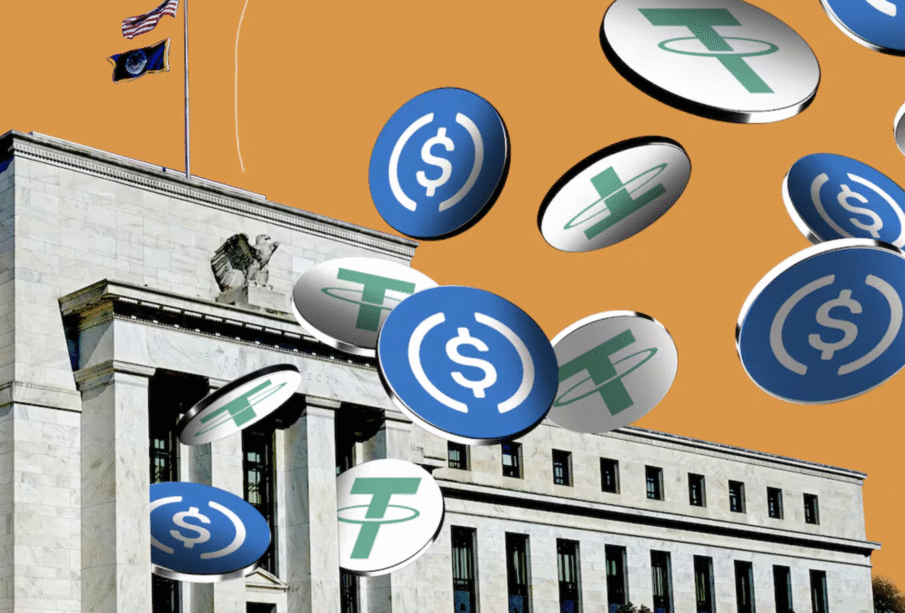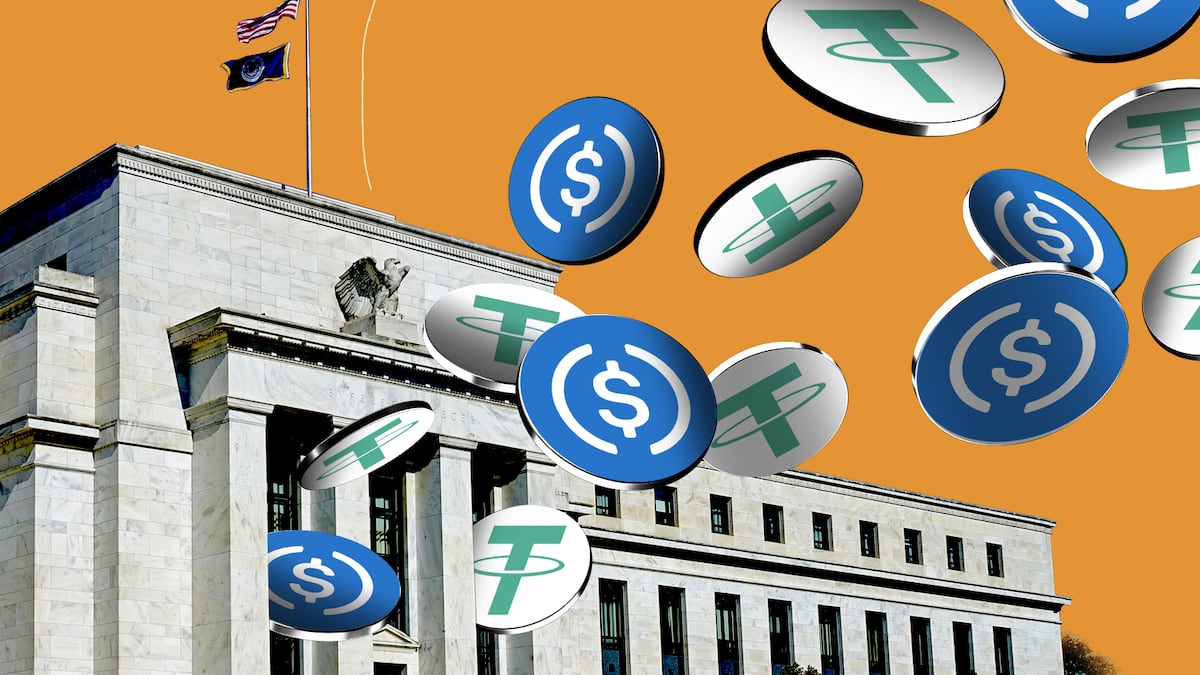The Twin Swords of Damocles: Stablecoins and U.S. Debt

On May 19, 2025, the U.S. Senate voted 66-32 to advance the procedural motion for the GENIUS Act, signaling that stablecoin regulation is entering the practical phase of federal legislation. This vote marks a historic moment, potentially the first time our generation witnesses the “on-chain issuance” of the U.S. dollar becoming a legislative priority. It also raises the question of whether stablecoins and U.S. debt—two looming “swords of Damocles”—will reshape the crypto ecosystem, Web3, and the global payments landscape.
Part 1: The Sword of Stablecoins
Why Is the GENIUS Act So Significant?
Stablecoins, cryptocurrencies pegged to assets like the U.S. dollar, serve as a bridge in the crypto market, facilitating trading, cross-border payments, and decentralized finance (DeFi). By May 2025, the global stablecoin market surpassed $232 billion, with U.S. dollar-backed stablecoins dominating. Yet, the absence of clear regulations has left the industry in a gray zone, facing scrutiny over money laundering, fraud, and systemic risks.
The GENIUS Act aims to establish a regulatory framework for stablecoin issuers, with key provisions including:
- Issuance Requirements: Issuers must obtain federal or state licenses and meet stringent capital and reserve standards.
- Anti-Money Laundering (AML) and Security: Enhanced AML and Know-Your-Customer (KYC) measures to prevent illicit use.
- Consumer Protections: Transparency and fund security to avoid collapses like TerraUSD in 2022.
- Foreign Jurisdiction Limits: Restrictions on foreign stablecoins to reinforce the U.S. dollar’s dominance in the crypto space.
This vote isn’t just about normalizing the crypto industry; it’s a strategic move in the global fintech race. As U.S. Treasury Secretary Scott Bessent stated, “Dollar-backed stablecoins will maintain the dollar’s status as the world’s reserve currency.”
Winners and Losers if the GENIUS Act Passes
If the GENIUS Act becomes law, several sectors will face significant changes:
Winners:
- Stablecoin Issuers: Major players like Tether (USDT) and Circle (USDC) will gain legitimacy, despite higher compliance costs, boosting market trust.
- Crypto Exchanges: Clear regulations will attract institutional capital to platforms like Coinbase and Kraken, driving trading volume.
- U.S. Dollar Hegemony: By limiting foreign stablecoins, dollar-backed stablecoins will strengthen U.S. financial dominance, as European Central Bank President Christine Lagarde warned: “Dollar stablecoins could threaten the euro’s monetary sovereignty.”
- Investors: Reduced market risks will draw traditional capital, potentially inflating asset prices.
Losers:
- Non-Compliant Issuers: Smaller stablecoin projects unable to meet regulatory standards may be squeezed out.
- Foreign Stablecoins: Euro- or yuan-pegged stablecoins will face barriers in the U.S. market.
- Decentralization Idealists: Strict AML and KYC rules may erode crypto’s anonymity, sparking community backlash.
The Hidden Risks of Stablecoin “Freedom”
Stablecoins address two major crypto pain points: fiat conversion and price volatility. Tether, for instance, claims to issue one USDT per dollar received and burn one USDT when redeemed for a dollar, theoretically ensuring a 1:1 peg. This positions USDT as a “banknote” for crypto transactions, like buying a pizza with crypto.
But vulnerabilities exist:
- Over-Issuance Risk: Tether could issue more USDT than its reserves support. Historical incidents, like Tether being blacklisted by U.S. and Taiwanese banks for suspected over-issuance, highlight this concern.
- Reserve Circulation Flaw: When Tether receives a dollar and issues a USDT, that dollar is often invested in assets like U.S. Treasuries rather than locked away. The Treasury or secondary market sellers then recirculate that dollar, effectively creating two dollars in circulation: one in the real world and one as USDT in the crypto ecosystem.
This dynamic allows Tether to hold vast Treasury assets while the U.S. Treasury could theoretically accumulate USDT, all without violating regulations. This creates a dangerous feedback loop where excessive USDT issuance could inflate the money supply, potentially destabilizing markets.
Moral and Systemic Risks
Over-issuance of any currency is inherently problematic, driving inflation. If Tether over-issues USDT, holders may rush to redeem, forcing Tether to sell Treasuries, which could trigger a collapse in the already strained U.S. debt market. Conversely, a Treasury market crash could devalue Tether’s reserves, sparking a USDT run and devaluation.
Critics argue this is exacerbated by political moves. President Trump’s tensions with the Federal Reserve could push him to leverage stablecoins to bypass monetary policy constraints, using this loophole to address U.S. debt pressures—a short-term fix with long-term risks.
The core issue is that one dollar should remain one dollar. Allowing a single dollar to function as two—once in fiat and once as USDT—is a sleight of hand that risks catastrophic failure. As Senator Mark Warner noted, “If American lawmakers don’t shape this space, others will—and not in ways that serve our democratic values.”
Part 2: The Sword of U.S. Debt
In 2025 and 2026, the U.S. faces a wave of maturing debt, with its $36 trillion debt burden looming large. This is the second sword hanging over America and President Trump, who, at 80, has maintained a grueling schedule, reflecting the urgency of the crisis.
Trump initially aimed to induce a controlled economic downturn to lower Treasury yields, but this backfired, resulting in a simultaneous crash in stocks, bonds, and the dollar. While he has paused to reassess, the underlying issues persist. Trump’s tariff plans aim to balance trade deficits without fully decoupling from China, but these are stopgap measures.
Can Crypto Solve the Debt Crisis?
Some propose that stablecoins and crypto could alleviate U.S. debt. If countries buy dollar-backed stablecoins, which are backed by Treasuries, it’s akin to purchasing U.S. debt. Additionally, appreciating Bitcoin holdings could generate revenue. However, the $232 billion stablecoin market and Bitcoin’s total market cap (even if fully utilized) pale against the $36 trillion debt, covering barely a year’s interest.
The Bretton Woods system, tying the dollar to gold, lasted 27 years before collapsing. The current debt-driven monetary system, now 54 years old, is showing cracks. Whether stablecoins and crypto can extend its life or catalyze a new financial paradigm remains uncertain.
Conclusion
The GENIUS Act and the U.S. debt crisis represent twin threats and opportunities. Stablecoins could reinforce dollar dominance but risk inflating an already fragile financial system. The debt burden, meanwhile, demands solutions that crypto alone cannot provide in the short term. As history unfolds, this moment—marked by a pivotal Senate vote—may be seen as the dawn of a new financial era, for better or worse.









